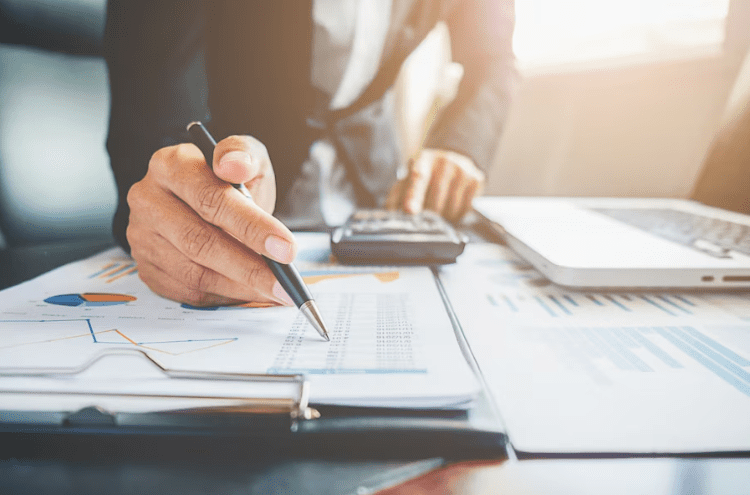July 14, 2024 This Week Top S&P 500 Gainers & Losers
Tesla Q2: The Bottom Is Likely In
Tesla: Time To Take Profits
Microsoft: The Q4 Results Should Surprise You
Tesla: Optimus And FSD Probably Won’t Save The Day
April 23, 2024 Maximizing Profits: When is the Right Time to Sell Your Business?
April 12, 2024 Improve Your Financial Status: A How-To Guide
April 12, 2024 How ZIM Integrated Container Tracking is Revolutionizing Global Trade
March 15, 2024 6 Best Growth Stocks To Buy Now According to Metatrader 5
Understanding Accumulated Depreciation and Its Importance for Businesses
September 8, 2023

The total amount of an asset’s depreciation over its useful life, which lowers its cost over time, is known as accumulated depreciation. It is a contra-asset account, which means that the value of all the assets is decreased by its natural balance. This accounting formula, called accumulated depreciation, is used to estimate losses on asset value. Transparency, usefulness, and the predictive power of data are all improved by knowing the best ways to report depreciation of business assets.
As a contra-asset account, accumulated depreciation lets businesses show an asset’s cost, total depreciation, and net book value on the balance sheet.
Accumulated Depreciation: Gather an Understanding
On a company’s balance sheet, the accumulated depreciation account has a credit balance representing the total wear and tear an asset has experienced during its useful life. As depreciation costs are recorded over time, they rise.
The accumulated depreciation is reversed when an asset is sold or taken out of service, removing all records from the company’s balance sheet. In accordance with GAAP, expenses must be allocated to the same accounting period as the related revenue is earned.
When a capitalized asset generates income, depreciation costs are annually recorded. An asset’s carrying value is determined by subtracting its accumulated depreciation from its historical cost. Its carrying value equals its salvage value at the conclusion of its useful life. Businesses credit accumulated depreciation and debit depreciation expense, which flows to the income statement and is shown on the balance sheet beneath related capitalized assets.
Decoding The Accumulated Depreciation Calculation
In order to determine an asset’s accumulated depreciation, there are three main methods: the straight-line method, the declining balance method, and the double-declining balance depreciation method.
All three are permissible under Generally Accepted Accounting Principles (GAAP), so businesses can select the method they like best.
1. Straight Line Method
Straight-line depreciation is a method that distributes an asset’s cost evenly over its useful life, using inputs like cost, useful life, and estimated salvage value. The depreciable base, the difference between cost and salvage value, is calculated by dividing the base by the estimated useful life:
Yearly Accumulated Depreciation = (Asset Value – Salvage Value) / Years of Useful Life
This uniform annual depreciation expense helps match expenses with revenue, ensures consistent charges, and aids budgeting, financial forecasting, and operating profitability.
2. Declining Balance Method
The declining balance method is an accelerated depreciation system that records larger expenses during the early years of an asset’s useful life and smaller expenses later. It uses current book value, residual value, and the rate of depreciation based on the estimated pattern of use over its useful life:
Yearly Accumulated Depreciation = Current Book Value * Rate of Depreciation
This method is suitable for assets that quickly lose value or become obsolete, like computer equipment or cell phones. The straight-line depreciation method is more suitable for assets with a steady decline in book value throughout their useful lives.
3. Double-Declining Balance Method
A depreciation rate that is multiplied by the straight-line rate is used in the declining balance method, which accelerates depreciation.
One declining method is the double-declining balance (DDB) method, which employs a double depreciation rate. Applying the declining book value during each depreciation period maintains a constant double depreciation rate over time.
Yearly Accumulated Depreciation = Depreciable Amount * Rate of Double-Declining Balance Method
The double-declining balance method is appropriate for assets with a quick loss in value, which leads to higher initial depreciation costs.
Understanding The Importance Of Accumulated Depreciation

A tangible or physical asset’s cost is spread out over the course of its useful life by using the accounting concept of depreciation to indicate how much of its value has been utilized.
By paying for assets over a set period of time, it enables businesses to generate income. The reader can determine the asset’s original cost and approximate its remaining useful life by looking at the accumulated depreciation on the principal balance sheet.
It is not a current asset, though, as current assets are those that are anticipated to last no longer than a year. In the asset section of the balance sheet, accumulated depreciation is shown as a natural credit balance.
The Additional Calculation Methods
Now that we have a clear understanding of the most important calculation methods for accumulated depreciation let us take a look at two additional methods:
1. Sum-of-the-Years’ Digits Method
To charge higher depreciation costs in earlier years and lower charges in later periods, accelerated depreciation employs decreasing charge methods like sum-of-the-years’ digits (SYD). The SYD method divides the number of years in the remaining asset life for the same year by the total of the remaining asset life every year throughout the asset’s life to determine the depreciation rate percentage.
This approach is appropriate for assets like cars that lose most of their value early on in their useful lives.
2. Units of Production Method
Depreciation expense is determined by multiplying the expected number of units produced by the equipment’s original cost less its salvage value.
This method is used for bookkeeping and tax deductions, and higher costs can be offset by larger deductions in more productive years. The unit of production method is most accurate for assets with wear and tear based on production, helping businesses track profits and losses more precisely. Depreciation begins when an asset starts producing units and ends when it reaches full recovery or produces all expected units.
How Is Accumulated Depreciation Treated On The Balance Sheet?
- The total depreciation expensed against the value of an asset, known as accumulated depreciation, is what is shown on the balance sheet as a credit rather than a debit.
- Depreciation lowers an asset’s cost and should be noted as a deduction from the cost of the corresponding fixed asset on the statement of financial position.
- Depreciation accumulated over time is not an asset or a liability; instead, it is deducted from the asset’s value separately and handled as a contra asset.
- On the balance sheet and asset ledgers, it is categorized as a contra asset and debited to the profit and loss account annually. It is listed as a contra asset with a natural credit balance below the related capital asset line.














